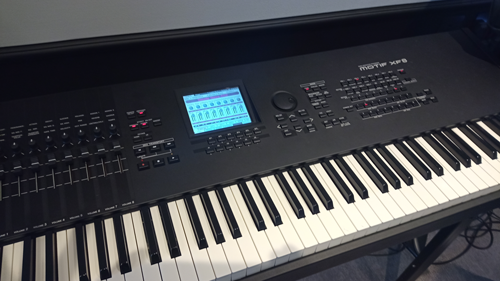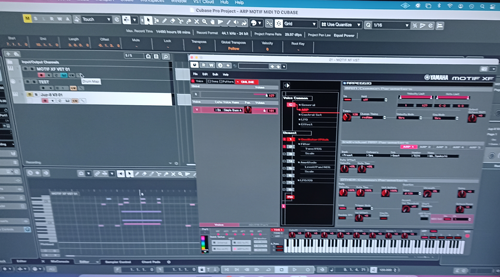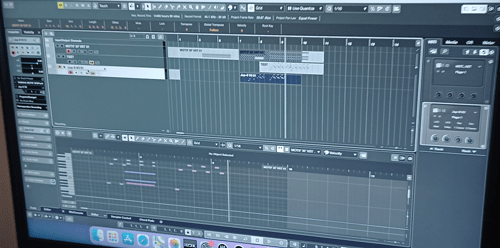Last week I visited a client, R, in central London to help with a few setup questions he had in his studio. One of the topics we covered was:
Recording the Arpeggiated MIDI Output of a Yamaha Motif XF8 in Cubase

The Motif XF8 is a fantastic workstation keyboard. I have encountered it before in some of my other client’s studios and have always been impressed by the range of great sounds that come out of this unit.
I had previously worked with R in a remote technical support session, where I helped him set up his Yamaha Motif to be controlled by its VST editor plugin within Cubase. R was having a problem with the connection between Cubase and the Motif. The solution in that instance involved finding and installing the correct USB drivers to match R’s version of OSX.
R liked the Motif’s arpeggio patterns and been using them in his Cubase tracks. Currently, he was only able to record them as audio clips using the Motif’s synth engine. R wanted to be able to record the patterns as MIDI data that he could edit in Cubase and send to his VST instruments.
We started the process of working out how to record the arps by opening Cubase, creating a test project and confirming that the VST Motif editor was still working properly.
Once we had MIDI flowing in and out of the Motif and could adjust the settings in the editor, the solution wasn’t too hard to find.

In the bottom left of the editor plugin, we enabled the MIDI option ARP TO PC.
In Cubase we set up a new MIDI track to record the output of the Motif. One thing that created an issue was that the MIDI outputs of both the VST editor and the hardware of the Motif were both selectable as inputs for our new MIDI track. We initially selected the VST editor’s output as the input for the track, but this recorded both the unprocessed MIDI coming from the keyboard presses and the arpeggios generated by the Motif.
We experimented with the Local Control settings on the Motif, but this didn’t work. We looked at how MIDI was being routed from the Motif to Cubase and discovered our mistake was within the MIDI track’s input settings.
Once we worked out the cause of the conflict, the solution was simple. We selected MOTIF USB MIDI INPUT (1) as our Cubase track’s MIDI input and when we tested again only the arpeggios were being recorded.
We tested the setup by recording and editing some Motif MIDI patterns in Cubase.

R made some notes and a video to help him remember how to set it up again without my help in the future.
ABOUT THE AUTHOR

PAUL ANDREWS
I’m the owner and lead technician for Audio Support, a small company based in London, UK that connects remotely with clients worldwide to help them with their music technology issues. I’ve run Audio Support since 2005 and in that time I’ve seen and solved thousands of recording studio problems.
Outside of Audio Support, I run music workshops at a local school, play bass in a 90s tribute function band and perform modular synth jams with friends on Twitch.
Get support for similar problems
Get in Touch
- Use WhatsApp, email or the form below to contact us.
- We will confirm if we can help.
- We will arrange a date and time for a remote support session and send a link for you to make payment.
- At the agreed time, our technician will connect via voice call and remote desktop to resolve the issue.
Find out more about how our services work.